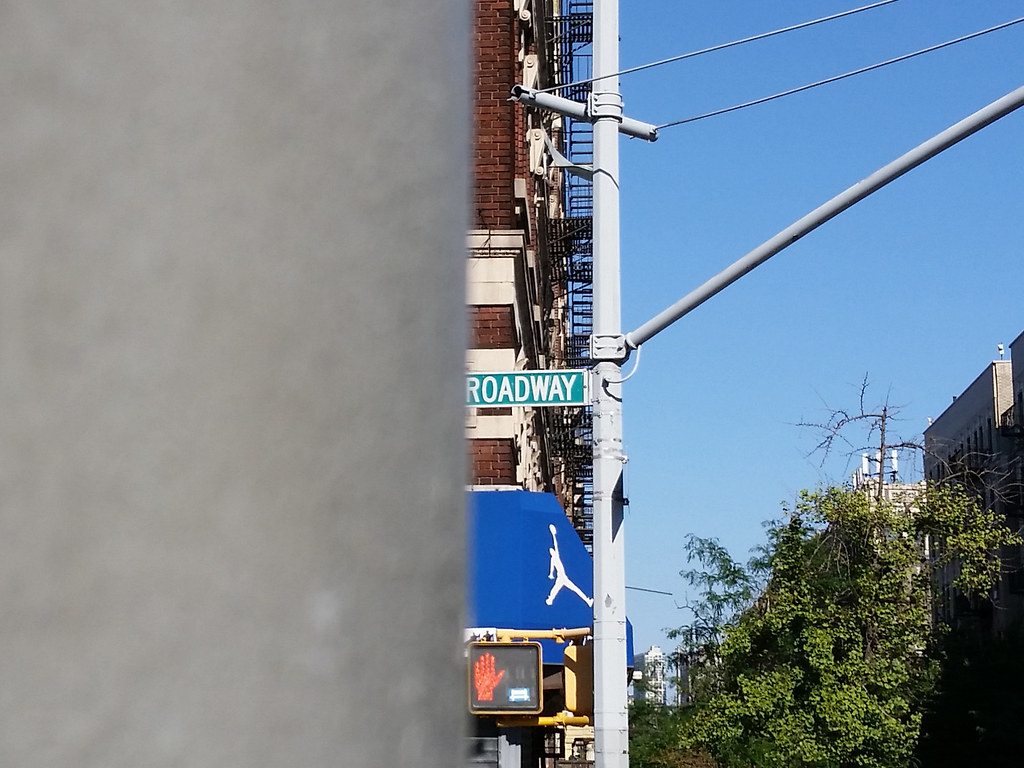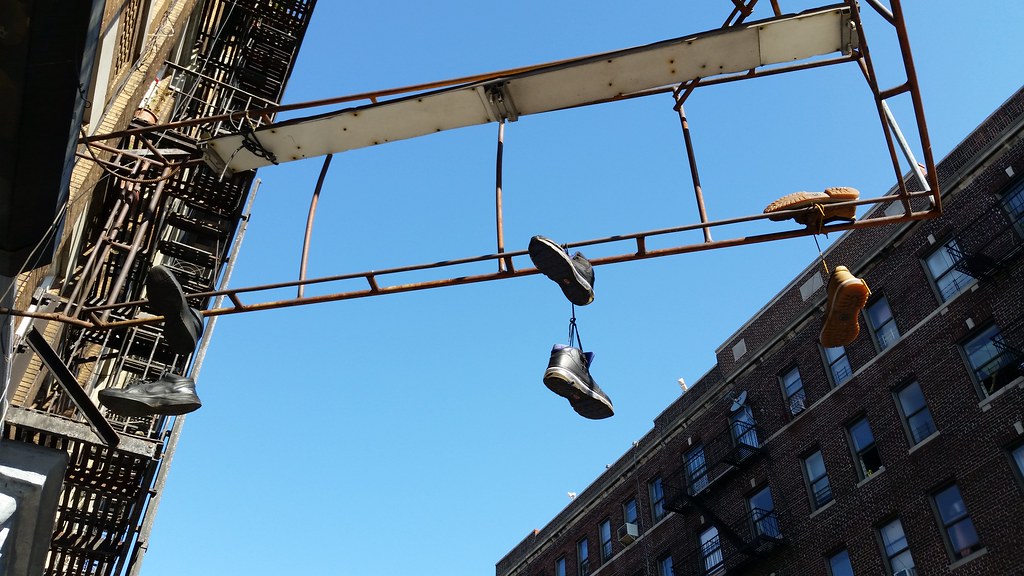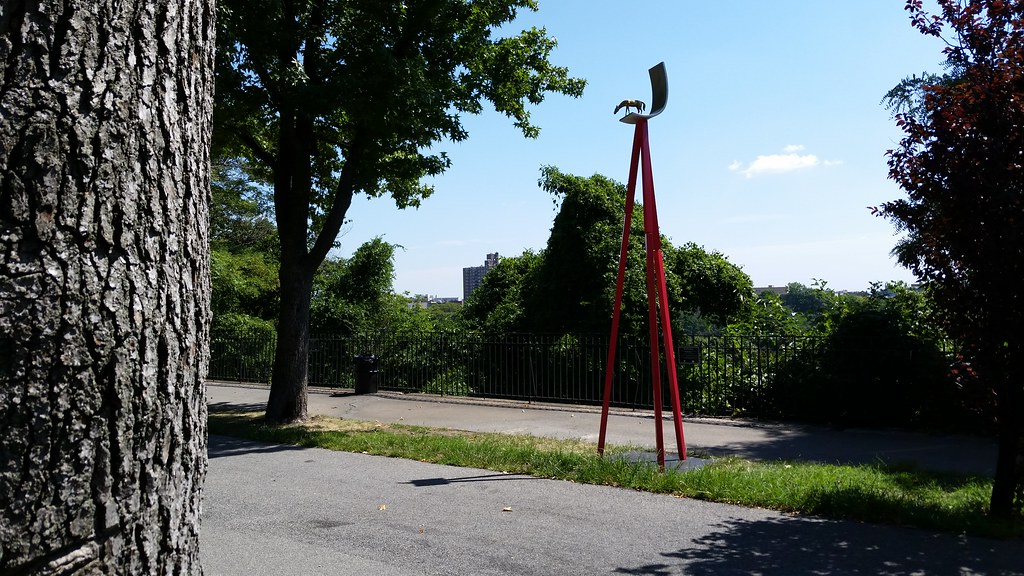
This intriguing Herb Rosenberg piece, whose not-so-intriguing title — A horse named NSA - Keeping an eye on you — sounds like a description of a bad political cartoon, is part of an exhibition in Highbridge Park called Oh Sit! 14 Sculptors Consider the Chair.
The exhibition consists of the work of — you guessed it — nine sculptors "respond[ing] imaginatively to the notion of sitting or using a chair." (As it turns out, 14 Sculptors is not a tally of participating artists, but the name of the group to which they belong.)
From the Parks Department's website, some more great artspeak: "Oh Sit! is framed as an imperative, a command—a way of asking the viewer to look and really consider the concept 'chair' both objectively and subjectively."
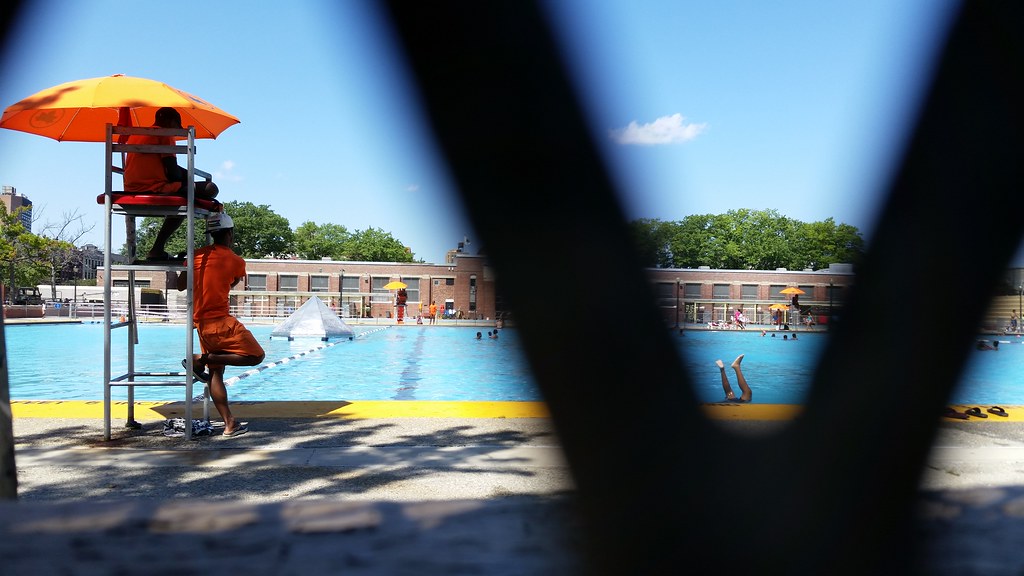
This pool in Highbridge Park was one of eleven massive, WPA-built outdoor pools that the city opened in 1936. It was constructed on the site of the old High Bridge reservoir. You can see photos of the reservoir's demolition in 1934 here.

This old milestone, which stood on the Kingsbridge Road at least as far back as 1813, is now located on the grounds of the Morris-Jumel Mansion. Of the perhaps 40 or 50 milestones that once marked distances along various roadways in what is now NYC, this one is, to the best of my knowledge, one of only four originals that can still be found outdoors in the city.

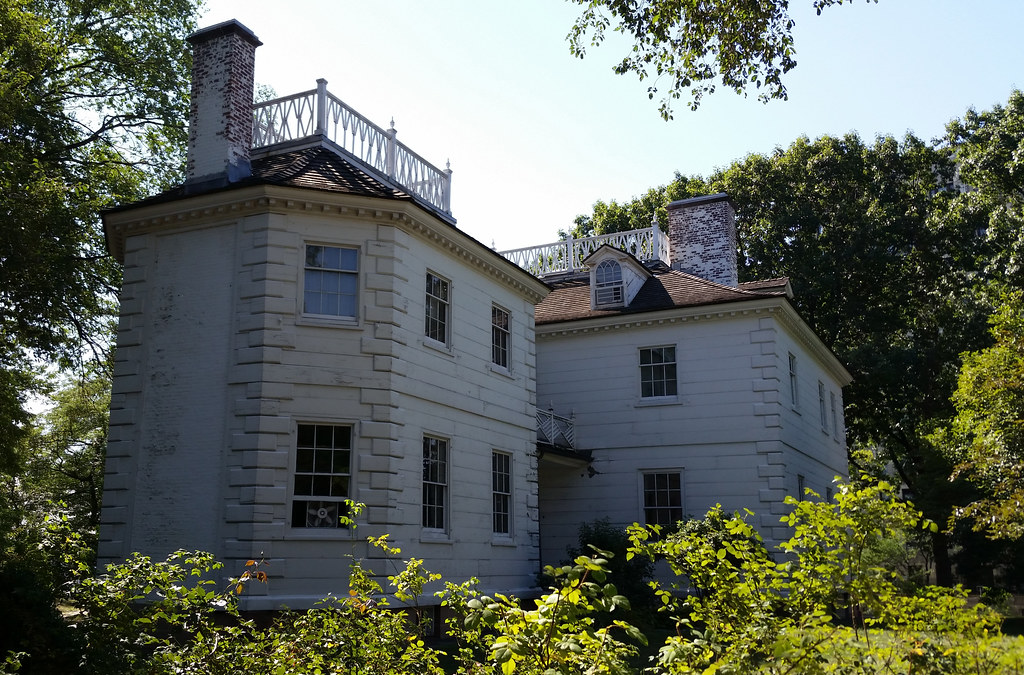
Built in 1765, this is Manhattan's oldest remaining house. It served as General George Washington's headquarters — as noted in the subway — for about five weeks in the fall of 1776 during the Revolutionary War, and was subsequently taken over by the British and their Hessian allies after they drove the Americans from Manhattan.
In 1790, the mansion was the site of a dinner for the members of then-President Washington's cabinet and their families. Among those in attendance were John and Abigail Adams, Thomas Jefferson, Henry Knox, and Alexander and Eliza Hamilton. (The Hamiltons would go on to build their own house, the Grange, less than a mile south of here.)
Stephen and Eliza Jumel purchased the mansion in 1810. Stephen passed away in 1832, but Eliza continued to live in the house until her own death in 1865. One notable resident during her time here was the elderly former Vice President Aaron Burr, Alexander Hamilton's killer, who married Eliza (Jumel, not Hamilton) in 1833.
The marriage, strained by Burr's financial irresponsibility, did not last very long, however. Eliza filed for divorce on July 11, 1834, the 30th anniversary of Burr's duel with Hamilton, and was represented in the proceedings, as she had been in legal matters years before, by Alexander Hamilton Jr., Hamilton's son. Burr stalled as long as he could, but the divorce was finally granted a couple of months before he died in Staten Island in 1836.
While he was working on his musical Hamilton, Lin-Manuel Miranda spent time here at the mansion, writing in Burr's old bedroom.

This minimum-security facility, known since 2010 as the Edgecombe Residential Treatment Facility, is located in the old Mother Cabrini Memorial Hospital. If you look closely, you can spot a caduceus above a door on 163rd Street.

The smaller, classic-looking birdhouses, to the right of each of the more elaborate houses, were not originally included when this was built in 2011 or 2012. Perhaps they were added in concession to the reality that birds don't care much for the architectural sensibilities of humans. Or perhaps the whole thing was just intended to be a work of art and the birds were merely an afterthought.

These charming wooden row houses, lining both sides of narrow Sylvan Terrace, were built around 1882 on what was then a private street carved out of the estate surrounding the Morris-Jumel Mansion. Today, with its identically painted facades and Belgian block pavement, Sylvan Terrace feels like a place out of time, especially when you're looking in the other direction toward the mansion. Check it out for yourself in Street View.
UPDATE: You can see photos and floor plans of the interiors of a couple of these houses here and here.

The illuminated apartment house in the background is Audubon Hall; the one in front is the Grinnell. Here's a circa-1910 photo of the Grinnell showing some roof adornments that have since been removed.
These buildings stand in a section of Washington Heights once known as Audubon Park, a residential area that grew out of the wooded estate (map) of the famed ornithologist and illustrator John James Audubon. (You can view online the full collection of Audubon's stunning illustrations from his landmark work Birds of America.) In the years after Audubon's death in 1851, his family gradually sold off their property; by 1873, most of Audubon Park was owned by the Grinnell family.
The fittingly middle-named George Bird Grinnell was taught as a young boy by Audubon's widow, Lucy, and would go on to become a noted naturalist in his own right. Known to many as "the father of American conservation", he founded the original Audubon Society and was the driving force behind the creation of Glacier National Park.
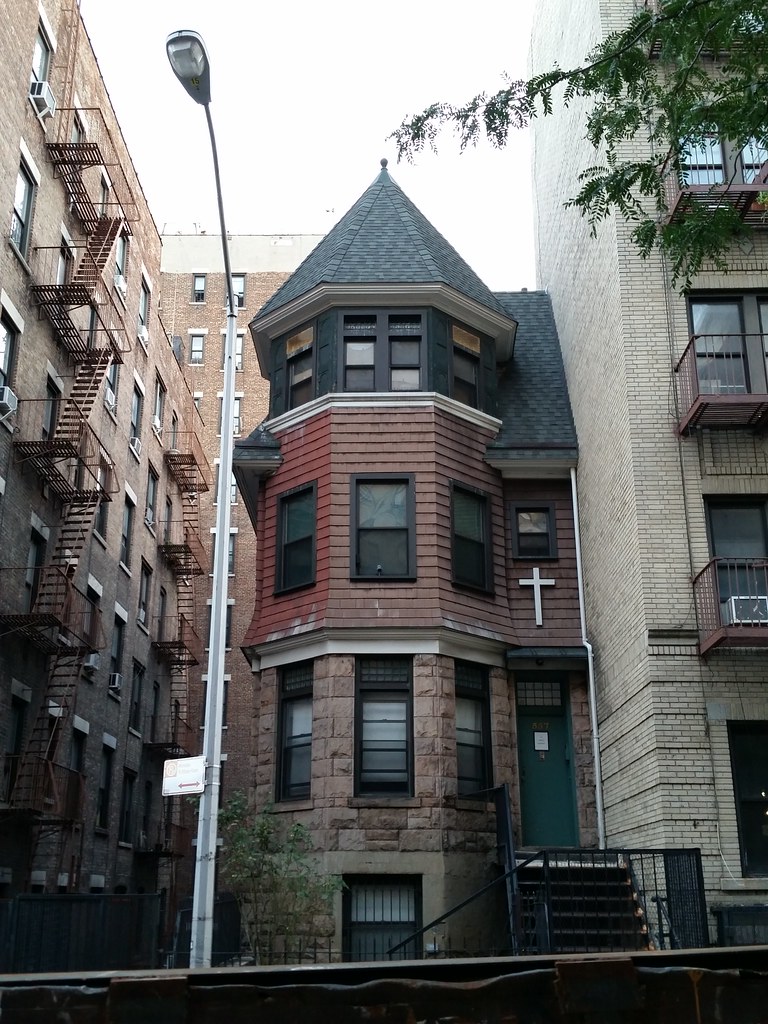
This building really stands out on this block, where it's the only one of 14 structures on the north side that's not a flat-fronted, five- or six-story apartment house. It was purchased in 1909 for future use as the rectory of the Church of Our Lady of Esperanza, which was completed in 1912 a block away on Audubon Terrace. A book about the church published in 1921 lists this address for the rectory, but a 1925 expansion project provided space for the rectory inside the church itself. This building is still owned by Our Lady of Esperanza, but I'm not sure what its function is these days.
I'm walking every street in New York City.
This is the counterpoint to my walk across the US. Instead of seeing a million places for just a minute each, I'm going to spend a million minutes exploring just one place. By the time I finish walking every block of every street in all five boroughs, I'll have traveled more than 8,000 miles on foot — all within a single city. Details!
Email me at matt@imjustwalkin.com
Subscribe to my email list
Maps: Progress | Photos
Your donations allow me to keep walking full-time. If you think what I'm doing is valuable and you'd like to offer some support, I would be very grateful. On the other hand, if you think I'm a worthless bum, feel free to email me and tell me to get a job, bozo. Both are excellent options!


